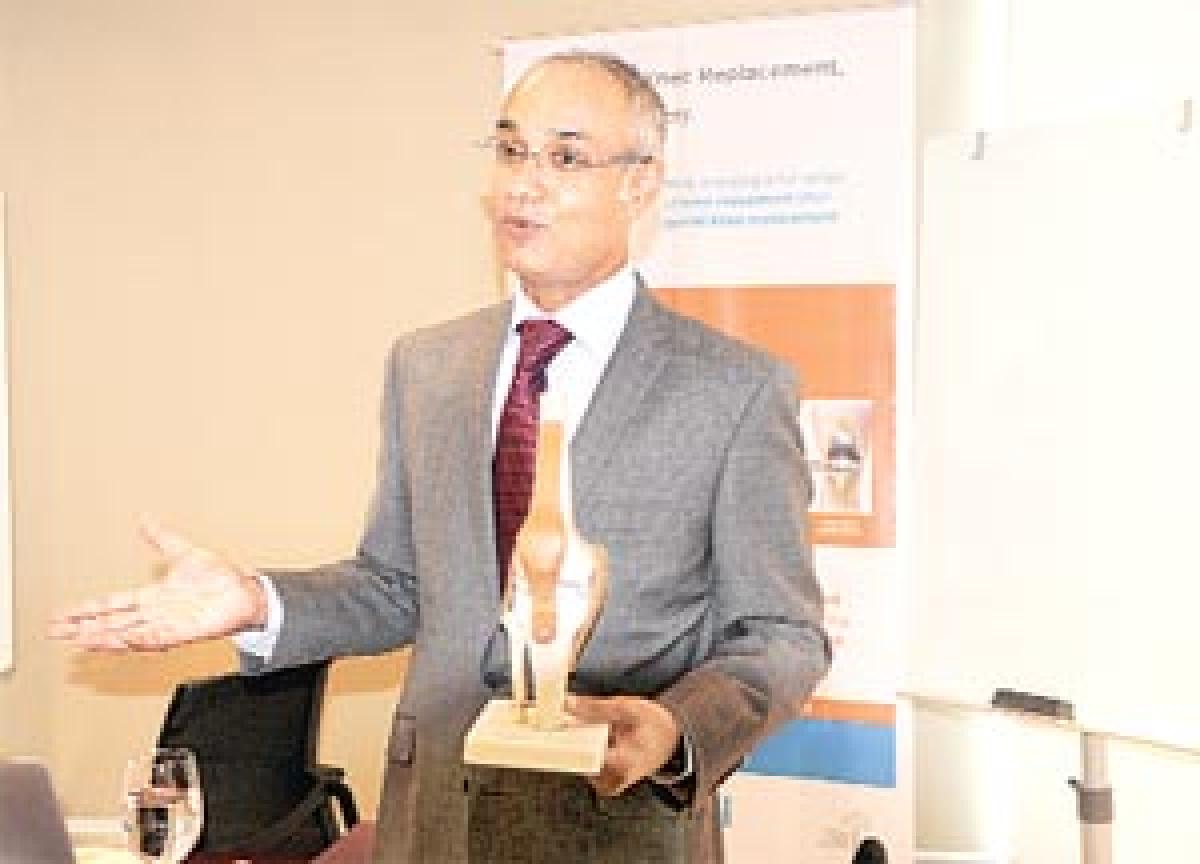Live
- Shahid Kapoor’s ‘Ashwatthama’ kept on hold due to budget constraints
- ‘Drinker Sai’ teaser: Attracts youth
- Netflix Outage in India and US Ahead of Tyson vs Paul Match
- Police Intensify Investigation into Lagacharla Attack on Officers; Eight More Detained
- Google Docs Introduces AI-Powered Clip Art Generator with Gemini
- LIC sets up stall at India Int’l Trade Fair
- Celebrating journalism and its role in society
- Supporting emotional well-being in children
- Govt plans 1 mn sq km oil exploration by 2030
- Empowering the future through quality education
Just In

Partial knee replacement has been in practice since the early 1970s but is just about gaining acceptance in India. According to recent studies up to 30 per cent of patients recommended for a total knee replacement would just need a partial knee replacement.
Partial knee replacement has been in practice since the early 1970s but is just about gaining acceptance in India. According to recent studies up to 30 per cent of patients recommended for a total knee replacement would just need a partial knee replacement.
The unavailability of trained surgeons in partial replacement and the reluctance on part of surgeons to explore partial replacement are reasons cited for it not becoming a common practice.
In Hyderabad, close to 600 total knee replacements take place every month and at least 30 per cent of these could well have been partial. However, in the last two years, partial replacement is gaining ground. Dr Udai Prakash, chief joint replacement and adult reconstruction unit at Udai Omni Hospital says, “We have done 110 partial knee replacement surgeries in the last two years and awareness is growing among people as well as the medical fraternity.”
Dr Udai asks, “Why should we replace the whole knee when only a small part is damaged? Why would President George Bush undergo a partial knee replacement instead of total knee?”
Partial knee replacement is done either in the inside (medial) part, outside (lateral) part or the knee cap. According to the medical journal, ‘The Lancet’, advantages with partial knee replacement include lower rate of infection, heart attacks, stroke and clots. Another advantage is patients undergo the operation through a much smaller 6 cm incision.
Less is more
- More than 25% of patients with severe knee arthritis may be suitable candidates for this type of surgery.
- Smaller incision (6 mm) minimally invasive
- Less blood clot, bone loss and reduced pain after surgery
- More bend compared to a total knee replacement
- Faster rehabilitation. Patient can walk without support in two weeks as against four to six weeks in total knee replacement.
- Bone, cartilage and ligaments in the healthy parts of the knee are saved and patients feel more natural.

© 2024 Hyderabad Media House Limited/The Hans India. All rights reserved. Powered by hocalwire.com







